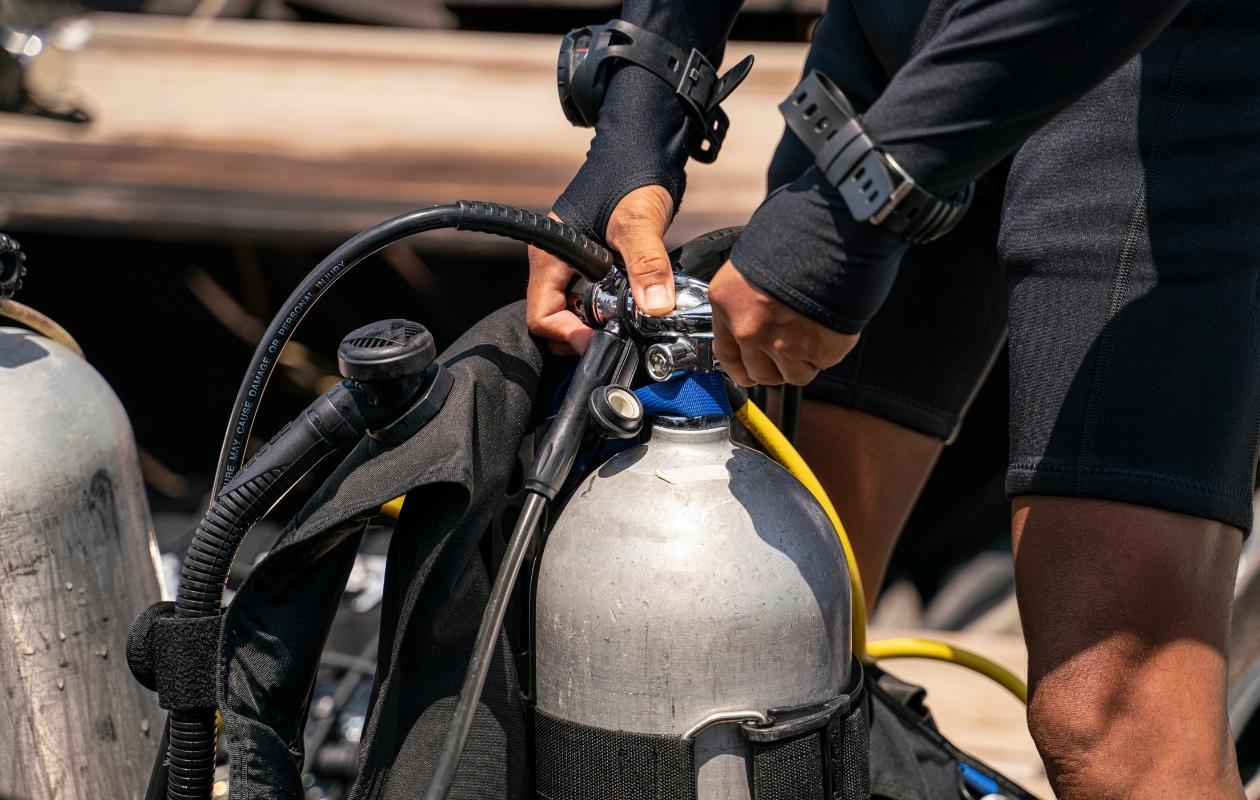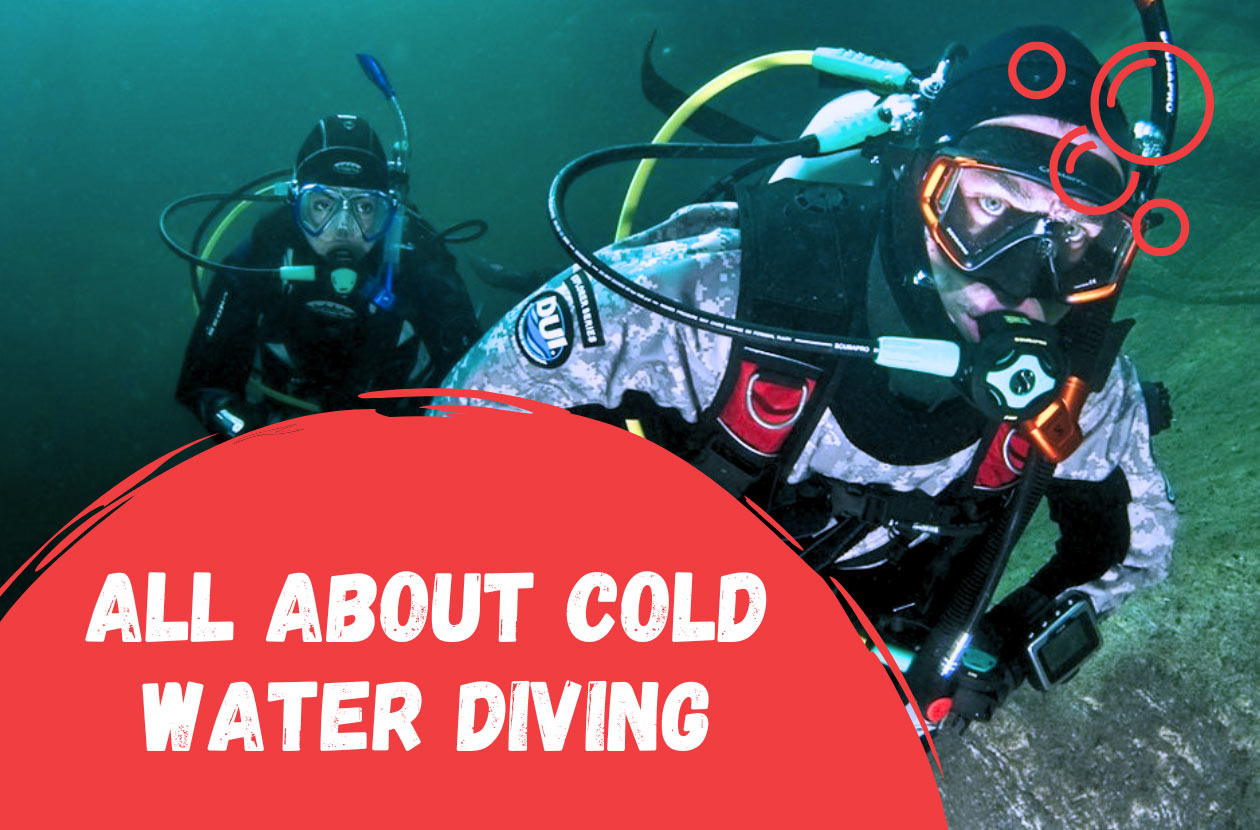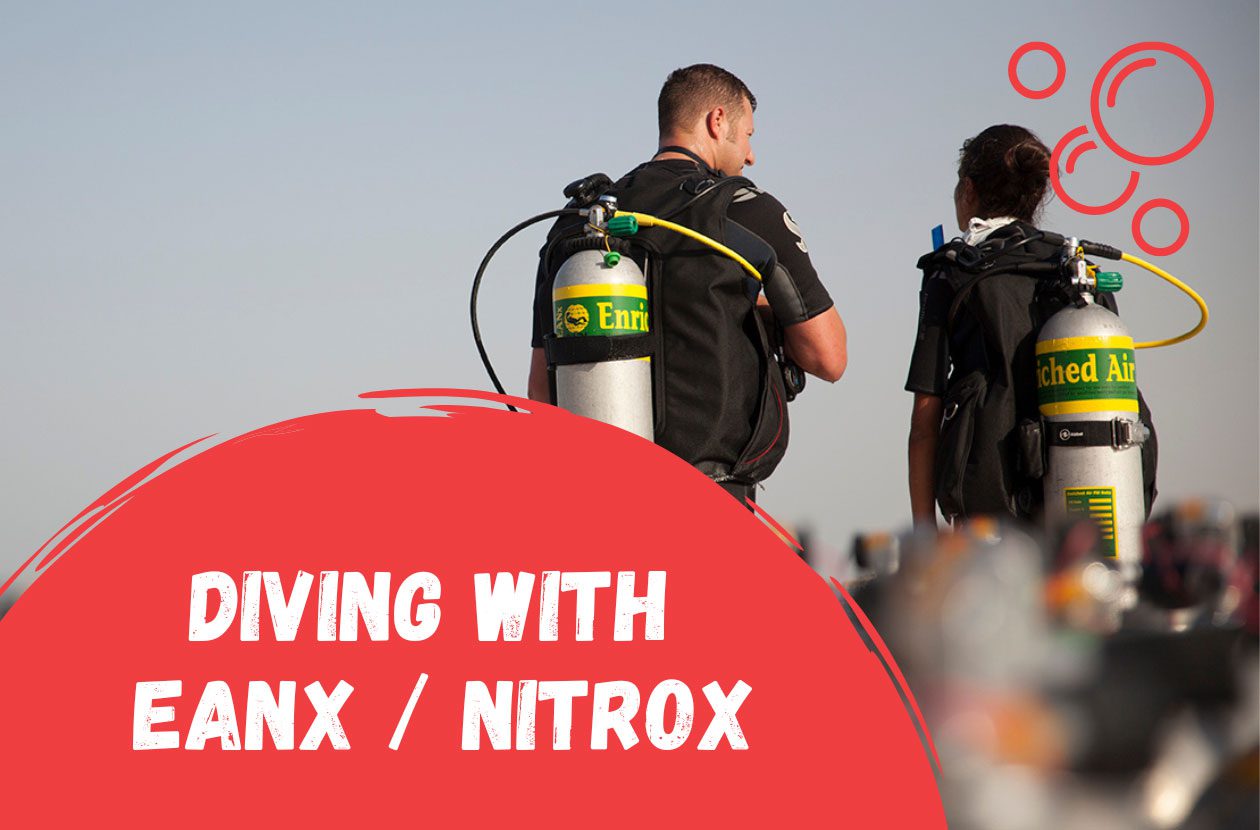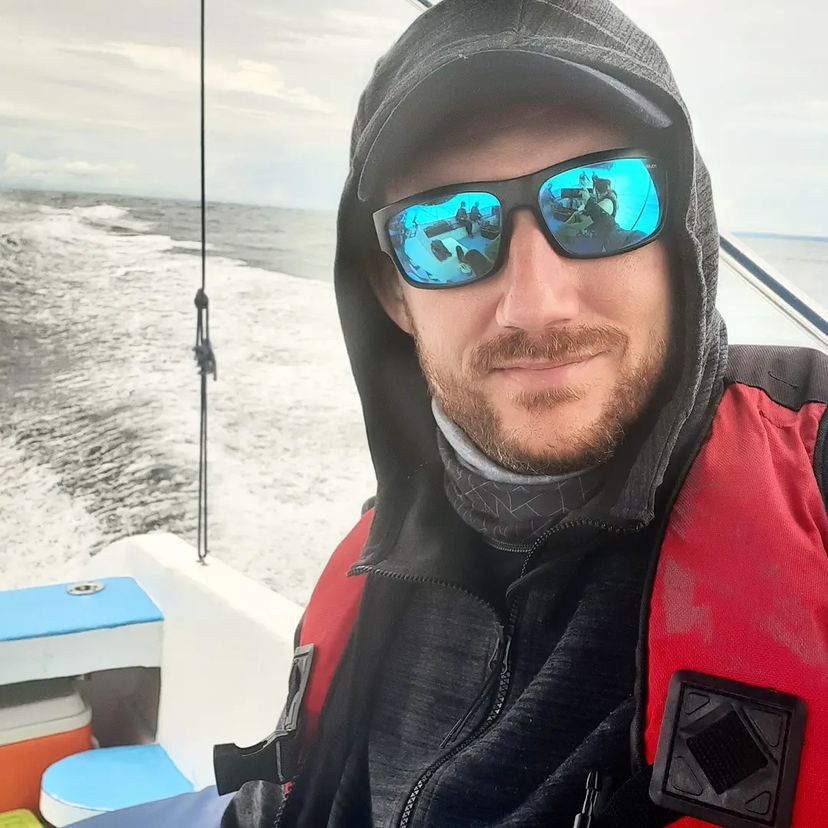Surface Air Consumption or SAC rate for short is one of the most important indicators in aware diving. Why so? Well… if you want to know how long the contents of a tank will last during a dive, you have to calculate it somehow. The starting point is precisely your individual SAC Rate. Today I’m going to explain in simple terms what the surface air consumption indicator is and how to use it.
Table of Contents
Why do we need a Surface Air Consumption rate?
A very common question among novice divers is how long they can stay underwater with one tank. I hear this question almost every time during Discover Dive or at the beginning of a diving course. This is obviously a very understandable and logical question. Since I have a limited air supply, how long will it last? My answer is always the same and always causes confusion among students. I don’t know. But what does it mean? My dive instructor, who is supposedly pretty good at what he does, doesn’t know the answer to one of my first questions? That’s right. I don’t know.
I know how long I can dive on one tank, but I don’t know how long you can dive with it. Because, I don’t know your abilities, lung capacity, underwater behavior and ultimately your SAC Rate. That’s why my answer is always – I don’t know. Does it make sense? But what can be done to know and calculate the expected time under water?
What does air consumption depend on?
Even as a student of a basic diving course, you should know that air consumption varies significantly. This is influenced by many factors and among them we can certainly find:
Depth: The deeper the diver goes, the greater the pressure exerted on the air in the scuba tank, leading to faster air consumption.
Dive Duration: Longer dives generally result in higher air consumption, especially if the diver is active and exerting more energy.
Diver Experience: Experienced divers often have better air consumption rates due to their familiarity with buoyancy control and breathing techniques.
Physical Fitness: A diver’s physical fitness level affects their breathing efficiency. Physically fit divers tend to have lower air consumption rates.
Water Temperature: Diving into cold water can increase air consumption due to the body’s effort to keep warm.
Anxiety/Stress Levels: Nervousness or stress can cause rapid breathing and higher air consumption. Calm, relaxed divers tend to use air more efficiently.
Buoyancy Control: Maintaining proper buoyancy and trim helps reduce unnecessary exertion and, consequently, air consumption.
Of course, there are more factors affecting higher gas consumption underwater. You can read more about how to reduce air consumption during a dive here: How to reduce air consumption while diving?
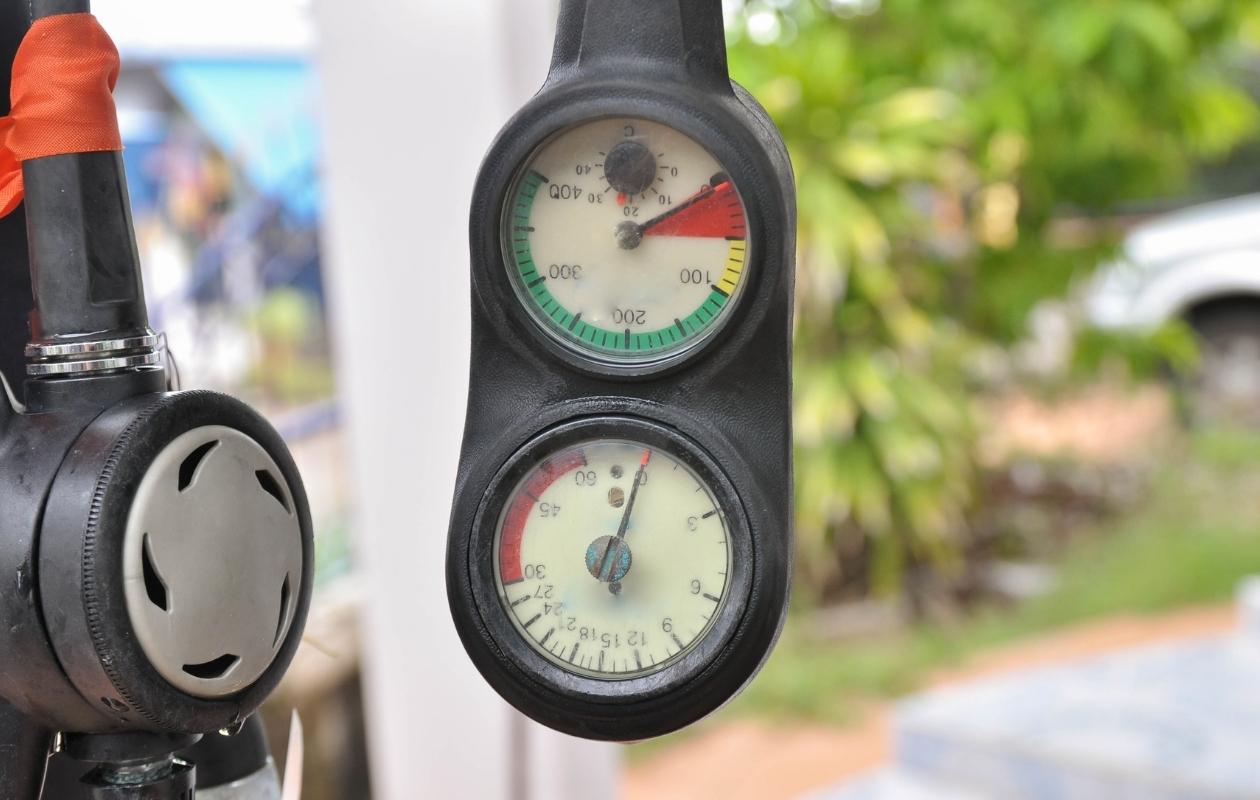
What is the Surface Air Consumption?
Since we’ve already explained that underwater air consumption varies depending on a number of factors, let’s finally move on to explain what exactly surface air consumption is. Now please focus for a moment, because understanding the definition of what SAC is, will be necessary later in this text. The surface air consumption rate is the amount of air consumed while breathing for one minute at the surface. In other words, at a pressure of 1 Atmosphere, or 1 Bar.
The result of these calculations is called SAC Rate and will be the starting data for calculating how much air you will need for your planned dive. However, since for these later calculations we need data on how much air you will consume underwater, rather than on the surface, we need to measure it below the water’s surface and make adjustments to equalize the pressure to 1 atmosphere. This may seem complicated, but in a moment you will see that it is quite simple to calculate. However, here we have two approaches to calculating SAC Rate, and I must mention both. One, a simpler one that uses bar per minute or PSI per minute. The other, usually more commonly used in technical diving is liters per minute or cubic feets. But before we get to that, let’s clarify how much gas we have in the tank.
How much gas is really in the tank?
We are used to talk about the amount of air (or other gas) in a tank in relation to pressure. How much air do you have? Full tank, so 200bar. This, of course, helps make communication underwater easier and improves the whole diving procedure. However, it is not quite the correct way to determine the amount of gas we have in the tank. In fact, we should use liters of gas. Here we use the unit “liters” in relation to the volume of this gas. And now please focus again. In determining the tank’s capacity, we use liters of gas at a pressure of one atmosphere. In simpler terms, what we mean is what volume the air would occupy if it were completely released from the cylinder at sea level.
So let’s take a simple example. We have a standard aluminum scuba tank of 11 liters that is pumped up to a pressure of 200 bar. How to calculate the actual volume of gas contained in this tank? It’s very simple. All you have to do is multiply the volume of the cylinder by the pressure. In our example: 11×200 = 2200L. This means that if we released the gas into the atmosphere (1 ata) from an 11-liter cylinder filled to a pressure of 200 bar, its volume would be 2,200 liters.
How to calculate the SAC rate?
Let’s finally move on to calculating your Surface Air Consumption rate. For this you’ll need scuba gear, a sea level body of water, and a watch. To find your SAC, jump into the water and start diving. Descend to a fixed depth, let’s say 10 meters. Once you’ve stabilized, note your current time, depth and tank gas pressure. Continue swimming at a comfortable pace for 10 minutes, keeping your depth constant the whole time. After 10 minutes, note the tank pressure again. This information will help us calculate your SAC rate.
Let’s get to the calculations:
- dive time: 10 minutes
- dive depth: 10m / 33ft
- consumed air: 50Bar / 725PSI
- tank capacity: 80cuft / 11 litres
Bar or PSI per minute
Now let’s calculate the amount of air consumed per minute by simply dividing the total amount of air consumed by the measurement time.
50Bar / 10 minutes = 5Bar per minute
725PSI / 10 minutes = 72,5PSI per minute
We already have information on gas consumption per minute during your dive. But we must remember that this measurement was obtained at a certain depth. In order to accurately determine the SAC rate, we need to normalize this measurement to the surface level, taking into account the absolute pressure occurring during the dive. From the basic diving course you know what the pressure increase under water is, so in our example at a depth of 10 meters we had a pressure of 2 atmospheres. Now all we have to do is divide our result by the actual pressure and we get our desired SAC.
50Bar / 10 minutes / 2ata = SAC 2,5Bar per minute
725PSI / 10 minutes / 2ata= SAC ~36PSI per minute
Liters per minute
Ok so now let’s move on to the second way of calculating Surface Air Consumption, that is, liters per minute. As I mentioned earlier, this way is more popular among technical divers, where everything must be more complicated 🙂 The beginning of the calculation is identical, and it can also be calculated from the data obtained while swimming at a constant depth or from the average depth of the entire dive based on the computer. Here, however, we take into account the capacity of the tank and the result is given in liters or cubic feets. This method of calculation is sometimes referred as calculating RMV (Respiratory Minute Volume) rather than SAC. It is not quite exactly the same, but there is not much difference between these indicators. Let’s go back to our example.
Metric scale
50 bar x 11 litre tank = 550 litres consumed during the dive.
550 litres / 10 minutes = 55 litres / min air consumption rate at 10 meter depth.
At 10 meters, the air is 2 times denser than at the surface so we divide by 2 to get a 27.5 litres/min SAC Rate.
Imperial scale
For imperial divers, the calculations become a bit more complicated because of the way cylinders are described. In this case, an 80-cubic-foot cylinder represents the volume of gas it contains at operating pressure. This is not the actual internal volume at normal atmospheric pressure, which is the way metric cylinders are defined. Therefore, give up on these imperial inventions and use the only correct scale – the metric one… But since you insist, let’s try to get out of it somehow.
We need to add something else here, so let’s go back to our example again. You made a 10-minute dive to a depth of 33 feet, during which you consumed 725 PSI and dived with an 80-cubic-foot tank with a working pressure of 3,000 PSI. So the calculation will look like this:
80 cubic feet x 725 psi / 3000 psi = 19.3 cubic feet of air used.
19.3 cubic feet / 10 minutes = 1.9 cubic feet / minute at 33 feet depth.
At 33 feet the air is 2 times denser than at the surface and so we divide by 2 to get a 0.96 cubic feet/min SAC Rate
And what should I do with this SAC Rate now?
Well… you’ve been reading this for a few minutes or more and you’ve already understood how to calculate the whole SAC thing, but you still don’t quite understand why you need it. After all, you usually dive with a full tank and return to the surface when you reach the agreed minimum. So why bother with the math? For most recreational divers, actually calculating this Surface Air Consumption rate doesn’t make much sense. Well, unless you want to do it for yourself. However, if we are talking about long or deep dives, it is worth calculating.
Knowing our SAC Rate, we can predict with good accuracy two things. The first is how much air we will consume while diving at a given depth for a given time. The second thing, relates to the question from the introduction, that is, how long will the air in the tank last.
How much air I will consume?
We know our SAC rate, we know the depth to which we want to dive and we know how long we want to stay there. The only thing we don’t know is how much air we will need for such a dive. But this we can quickly calculate:
We calculated the SAC earlier and it came out: 2.5 bar per minute, we want to dive to 20 meters and stay there 15 minutes.
Air needed = SAC * Pressure at depth * Time
Air needed = 2.5 bar/min* 3ata * 15 min = 112,5 bar
So there you have it – at this depth for this time you will use about 112 bar
How long will the air in the tank last?
The second calculation we can make is how much time we can spend underwater at a given depth. So we know our SAC Rate, we know the depth (20m), we know the amount of air we have. What we don’t know is the time. We assume that the cylinder has been filled to 200 bar, and the ascent will start at 70 bar. This means that we have 130 bar available to play with.
Time = Air Supply / Pressure at depth / SAC
Time = 130bar / 3ata / 2.5 bar/min = ~17 minutes
I hope you already understand what Surface Air Consumption (SAC) is and what it can be used for. Do you need to know how to calculate it if you are a recreational diver who treats diving only as a weekend hobby? Probably not. However, if you want to progress in diving and improve your performance underwater, this indicator will give you a lot of information.
In summary, SAC Rate is an important parameter in diving that measures the rate at which a diver consumes breathing gas during a dive. By understanding and managing your SAC, you can optimize your gas consumption, plan your dives effectively and ensure a safe and enjoyable experience underwater. After all, diving is a never-ending adventure, where the room for learning and improving one’s skills is endless.



